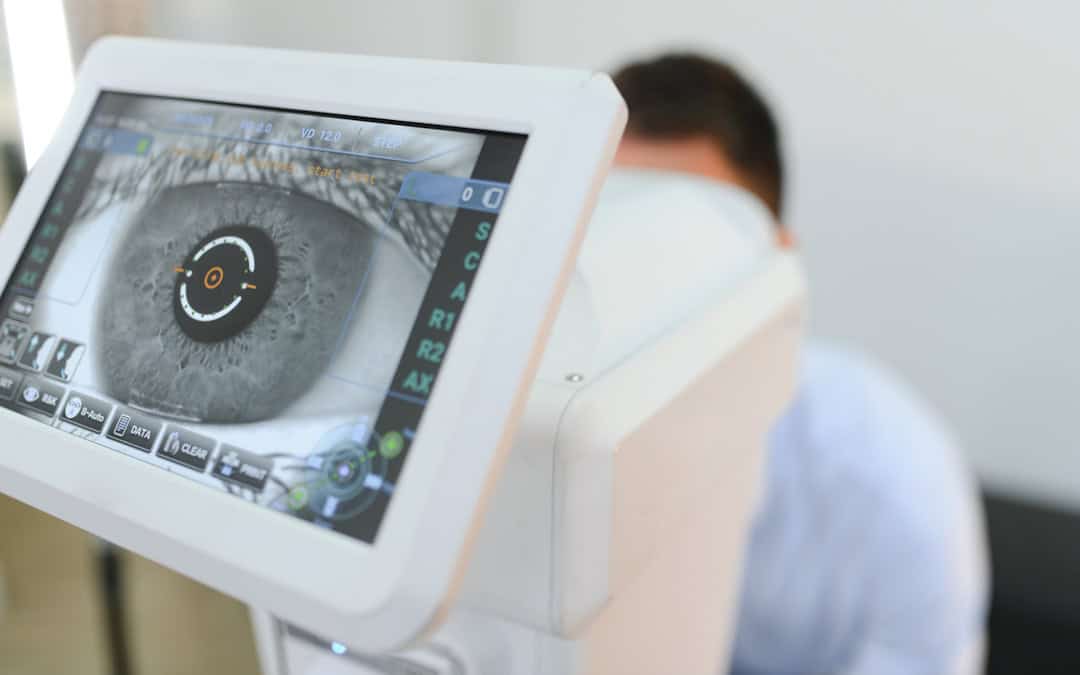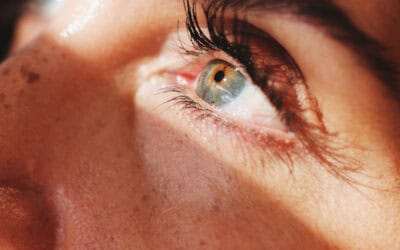If you’ve been diagnosed with Type 2 Diabetes, it’s important to educate yourself on the eye problems associated with the disease. Learn their recognizable symptoms to proactively manage your eye health.
How Type 2 Diabetes Impacts Eye Health
A diabetic cannot effectively produce insulin, which is the hormone that converts food to energy. Glucose is the simple sugar the system creates as it breaks down the carbohydrates in food. When the body functions normally, insulin sends a signal to the cells to absorb glucose from the bloodstream.
With diabetes, however, the body’s inefficient insulin production causes hyperglycemia, or high blood sugar. The unabsorbed glucose builds up in the bloodstream, seriously impacting other parts of the body, including the eyes.
There are four main eye conditions related to type 2 diabetes. They can be avoided or managed with regular dilated eye exams, maintaining a healthy diet, the cessation of smoking, and exercise.
4 Main Eye Problems Associated with Type 2 Diabetes
Individuals diagnosed with type 2 diabetes run the risk of developing diabetic eye disease. The four main eye problems associated with diabetes include cataracts, diabetic retinopathy, glaucoma, and diabetic macular edema. They are often asymptomatic in the beginning and may progress into a critical stage without routine dilated eye exams.
Cataracts
Positioned between the pupil and retina, the light-filtering lens is a clear membrane that protects the eye from UV rays and other harmful light. The lens focuses the light entering the eye, allowing it to see things clearly. Its shape changes by adapting to the distance of the object, flattening to see things far away and bending to see things nearby.
If a diabetic’s blood sugar levels remain consistently high, it creates a cloudy film buildup over the normally transparent lens. Vision becomes blurry or foggy, and it’s often accompanied by increased light sensitivity and difficulty seeing at night.
Diabetic Retinopathy
Diabetic retinopathy occurs when high blood sugar levels damage the blood vessels in the back of the eye, the retina. A healthy retina converts light into signals sent to the brain, and the brain transforms the signals into the images we see.
Diabetic retinopathy develops in stages over time.
Stage I Background Retinopathy
Microaneurysms appear as bulges in the blood vessels in the back of the eye. The vessels may leak small amounts of blood. Although treatment isn’t necessary at this stage, you do need to practice a healthy lifestyle to prevent the disease from further damaging your vision.
It’s important to note that if both eyes are affected, your risk of the retinopathy progressing to stage 2 or 3 within three years increases by about 25%.
Stage II Pre-proliferative Retinopathy
Significant changes occur within the retina, such as bleeding blood vessels. At this point, your vision could be affected, and your ophthalmologist may recommend increasing your dilated eye exam rotations.
Stage III Proliferative Retinopathy
Reduced oxygen levels and new blood vessel development occur during proliferative retinopathy. The blood vessels created during this stage are fragile, causing them to leak and form scar tissue. During this advanced stage, the retina could pull away from the eye wall, in what’s known as retinal detachment.
Proliferative retinopathy typically incurs vision loss that cannot be repaired. However, efforts are made to stabilize your vision and prevent further damage.
Glaucoma
Research continues on the direct link between type 2 diabetes and glaucoma; however, multiple studies conclude that individuals with the disease are “48% more likely to develop open-angle glaucoma over 20 years than nondiabetics.”
Diabetes-related glaucoma creates the growth of new blood vessels in the front of the eye to replace damaged vessels. However, the excess growth prevents the healthy flow of nutrient-rich fluid over the eye, by blocking the drainage angle. The buildup of fluid increases pressure on the optic nerve, damaging it.
Diabetic Macular Edema
The thin, abnormal blood vessels formed in the central area of the retina, called the macula, during proliferative retinopathy leak into the vitreous gel. The fluid and blood leakage cause the macula to swell, resulting in blurred vision.
Manage Your Eye Health with Type 2 Diabetes
If you have type 2 diabetes, you are at a higher risk of developing eye and vision problems. The good news is that you can control many problems associated with the disease through education and proper care.
6 Steps to Manage Type 2 Diabetes and Your Eye Health
Part of ensuring you continue to thrive with type 2 diabetes is by taking the necessary steps to create healthy habits and routines.
1. Stay Current on Information About Eye Problem Risks with Diabetes
Discuss the increased risks of diabetes-related eye disease with your eye doctor. Request information about helpful websites to follow for updated literature. It doesn’t hurt to expand your search to include healthy foods and recipes to try out, to reduce feeling restricted.
2. Maintain a Regular Eye Exam Schedule
The early stages of eye diseases are often undetectable, which increases the risk of progressing into more serious levels with irreversible consequences. Reduce the risk of vision loss by maintaining a regular schedule for a dilated eye exam with your ophthalmologist.
3. Manage Blood Sugar
Managing your blood sugar level helps prevent damage to the eyes’ blood vessels. Factors like a healthy diet, exercise, and following the prescribed dosages of medication all play vital roles.
4. Manage Cholesterol and Blood Pressure
Heart disease is more common in people with type 2 diabetes. The nerves and blood vessels that regulate the heart, as well as those throughout the body, including the eyes, are harmed by high blood sugar levels. Likewise, high cholesterol is a fat that builds up in the arteries, and over time it makes blood flow more challenging by damaging blood vessels.
High blood pressure and diabetes share common risk factors. Because diabetics have problems with insulin working effectively, they end up with excess glucose in the bloodstream, which could ultimately damage the kidneys and blood vessels. Scarring of the kidneys creates water and salt retention, raising blood pressure. The damage caused to the blood vessels can lead to high blood pressure.
Committing to lifestyle changes that include a healthy diet, exercise, and medication management can vastly improve a potentially toxic combination.
5. Get Plenty of Exercise
Regular exercise reduces blood sugar levels and enhances the body’s ability to produce insulin. The muscles used during exercise require more glucose from the bloodstream.
6. Quit Smoking
The nicotine and toxins in cigarettes interfere with oxygen in cell production and the body’s ability to use insulin, requiring more insulin to regulate blood sugar.
Contact Chang Eye Group in Pittsburgh to Schedule an Eye Exam
The knowledgeable and caring support staff and exceptional ophthalmologists at Chang Eye Group in Pittsburgh are dedicated to providing unparalleled medical guidance. Our physicians deliver comprehensive eye care, particularly as it relates to diabetes-related diseases.
Contact us by calling 412-429-2020 to schedule an appointment at one of our two Pittsburgh area locations.






